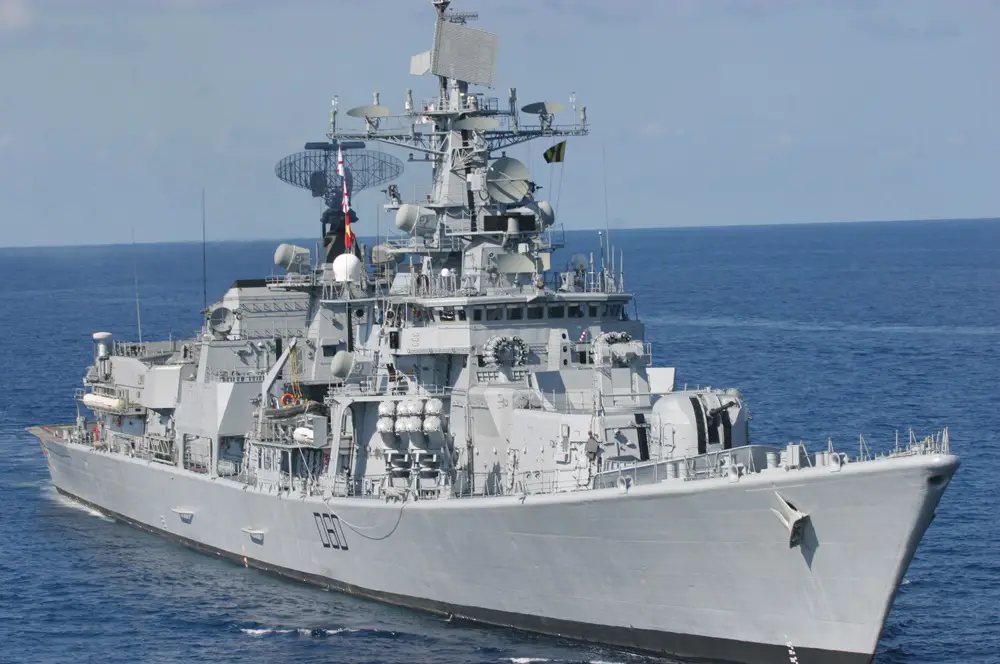The Indian Navy has taken a significant step in upgrading its surveillance capabilities by installing the advanced Lanza-N 3D air surveillance radar on the INS Mysore (D60), a Delhi-class guided-missile destroyer. This upgrade is part of a mid-life overhaul of the vessel, aimed at enhancing its operational efficiency and situational awareness. The Lanza-N radar is a long-range, modular, solid-state pulsed tactical radar system. It is designed to detect aircraft within a wide coverage volume, even under adverse conditions developed by the Spanish company Indra. The radar system includes a Secondary Surveillance Radar (IFF/SSR) for enhanced identification and tracking capabilities.
The version installed on the Delhi-class guided-missile destroyer INS Mysore is based on the radar fitted to the Spanish Navy’s ship Juan Carlos I. The installation on INS Mysore marks the second deployment of the Lanza-N radar on an Indian Navy vessel, following the first radar’s successful delivery and installation earlier this year. The radar’s deployment is part of a broader INR 12 billion (USD 143 million) contract signed in 2019 between India’s Ministry of Defence (MoD) and Tata Advanced Systems Limited (TASL). This contract includes the delivery of 23 shipborne 3D air surveillance radars by 2029. Indra is responsible for supplying three complete Lanza-N radars to the Indian Navy.

In addition, TASL will acquire the core elements of the Lanza-N system from Indra and manufacture 20 additional radars domestically for integration on various Indian Navy vessels. This partnership highlights the ongoing technology transfer and indigenous production efforts, with a reference radar provided to support maintenance and ensure continuity over the next 12 and a half years. The project underscores the export potential of the Lanza-N radar, showcasing it as a high-tech solution for surface ships. The system’s integration on Indian Navy vessels is expected to significantly enhance the Navy’s air surveillance and tactical capabilities, providing comprehensive situational awareness in the maritime domain.
The Delhi-class destroyers are guided-missile destroyers of the Indian Navy. Three ships of this class are in active service. The Delhi-class vessels were the largest vessels to be built in India at the time of their commissioning. The ships were built by Mazagon Dock Limited (MDL) at a cost of US$390 million in 2023 each. The Delhi class has been described as a stretched Rajput class with some elements incorporated from Godavari-class frigates and Sovremennyy-class destroyers. INS Mysore is equipped with an array of sophisticated sensors and processing systems that bolster its capabilities in maritime operations. Key among these is the MR-755-MAE Fregat E-band air and surface search radar. Complementing this is the BEL RAWL (Signaal LW08) D-band air search radar, Fregat M2EM E-Band radar, three MR-212/201 I-band radars, six MR-90 Orekh G-band fire-control radars (FCR).















